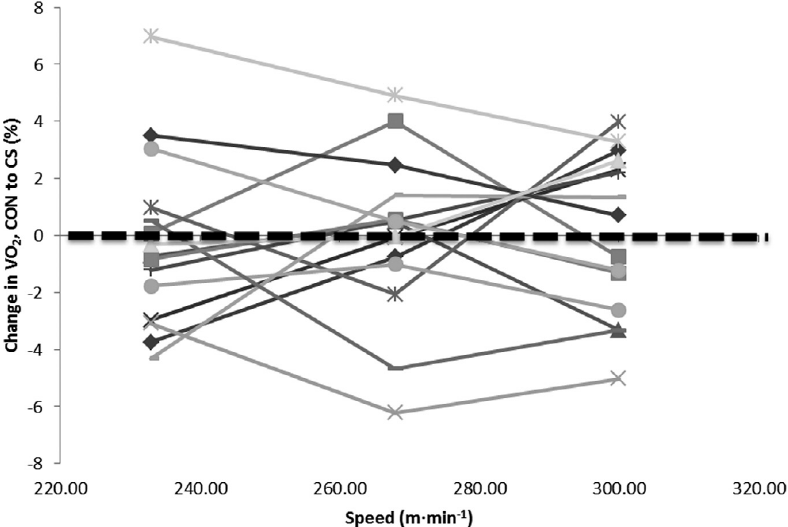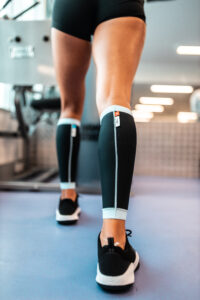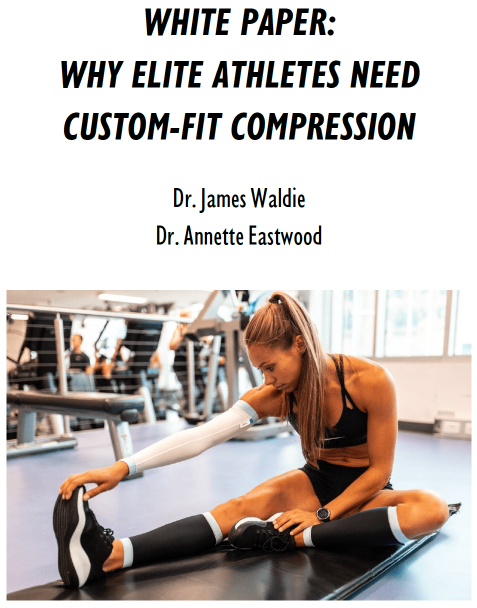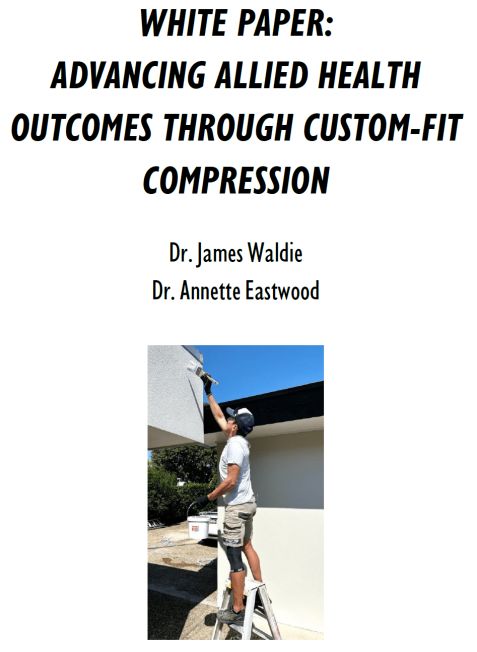Compression garments have been worn by runners for many years but what does the research say about compression garments for running performance and recovery and why is custom fit so important?
Benefits of compression for running
Research has shown that compression garments can have a positive effect on markers of athletic performance and recovery. A systematic review of 32 studies into the effects of compression clothing on running performance and recovery showed that runners may improve variables related to endurance performance when compression garments are worn (Engel et al., 2016). This is due to improvements in running economy, biomechanical variables, perception and temperature (Engel at al., 2016). Wearing compression garments was also shown to have a large positive effect on post exercise pain, damage and inflammation (Engel et al., 2016). Taken collectively the results of these studies support the use of compression garments for improving variables related to running performance and recovery.
Individual studies have shown performance improvements when compression garments are worn during running. Positive effects of wearing compression garments were reported when subjects performed two 5km run trials 60 minutes apart. When compression garments were worn, there was no significant difference between the two trials. Whereas performance times without compression garments were significantly slower (Brophy-Williams et al., 2017).
Compression garments also had a significant impact on reducing muscle soreness in the recovery period between two running trials (Brophy Williams et al., 2017). Similarly Hill et al., (2014) reported that perceived muscle soreness was significantly lower 24 hours post marathon when subjects wore compression garments in the recovery period.
Recent research has demonstrated that wearing compression garments during running can reduce soft tissue vibrations, muscle displacement and muscle activation in the lower limbs which may have implications for reducing the risk of injury associated with the repetitive impact forces during running (Broatch et al., 2020).
Importance of custom fit compression for runners
To date all of the research regarding the use of compression garments for running performance has used off the shelf compression garments which may explain the limited improvements in run times reported in some studies (Strickford et al., 2016). Off the shelf garments are proven to have variable levels of compression and inconsistent benefits (Hill et al., 2016., Brown et al., 2022).
In order to obtain maximal physiological benefits from compression, it’s essential that the garments fit accurately and the optimal compression regime is applied. The only way to achieve this is through custom fit compression. Therefore, runners choosing off the shelf compression will receive minimal benefit from their compression garments. By choosing custom fit, runners can be confident that the garments apply the optimal compression regime for maximal physiological benefits.
Individual responses to compression
It has been shown that individual responses to wearing compression garments varies greatly between individuals (Stickford et al., 2015). Considerable individual variation was shown in the percent change in VO2 when compression garments were worn compared to a control. The average percent change in submaximal VO2 with compression ranged from -4.8% to +5.1%.
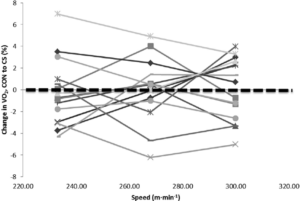
Figure 1: Individual percentage changes in oxygen consumption (VO2) from the control (CON) to compression (CS) condition across 3 submaximal speeds. (Stickford et al., 2015).
The wide range of scores reported in the study of Stickford et al., support the fact that not all runners receive adequate compression from off the shelf compression garments, highlighting the importance of custom fit compression garments for athletes.
A similar study on the effects of compression garments on recovery from muscle damaging exercise, showed that the pressure applied by custom fit compression garments demonstrate a smaller between individual variation in pressure compared to sports compression, especially at the thigh and the ankle (Brown et al., 2022).
In summary, wearing compression garments can improve markers of running performance and recovery. However, given the variability in pressure applied by off the shelf compression brands, and the wide variation in individual responses to wearing these garments, runners wanting to maximise the benefits of compression garments should choose custom fit to optimise performance and recovery.
REFERENCES:
- Broatch J. R., Brophy-Williams N., Phillips, E.J, O’Bryan, S.J, Halson, S.L, Barnes, S., and Bishop D.J. (2020) Compression Garments Reduce Muscle Movement and Activation during Submaximal Running. Sci. Sports Exerc., Vol. 52, No. 3, pp. 685–695.
- Brophy-Williams, N., Driller, M.W., Kitic, C.M., Fell, J,W., Halson, S.L. (2017). Effect of compression socks worn between repeated maximal running bouts. J Sci Med Sport. 12(5): 621-627.
- Brown, F, Hill, JA., Pedler, CR. (2022). Compression Garments for Recovery from Muscle Damage: Evidence and Implications of Dose Responses. Current Sports Medicine Reports (21 (2); 45-52.
- Engel, F.A., Holmberg, H.C., Sperlich, B. (2016). Is there evidence that runners can benefit from wearing compression clothing? Sports Medicine, 46: 1939-1952.
- Hill, J., Howatson, G., Someren, K., Davidson, S., & Pedlar, C. (2015). The variation in pressures exerted by commercially available compression garments. Sports Engineering (Springer Science & Business Media B.V.), 18, 115-121.
- Hill, J. A., Howatson, G., van Someren, K. A., Walshe, I., & Pedlar, C. R. (2014b). Influence of compression garments on recovery after marathon running. J Strength Cond Res, 28, 2228-2235.
- Stickford, A.S.L., Chapman, R.F., Johnston, J.D., Stager, J.M. (2015). Lower-leg compression running mechanics and economy in trained distance runners. Int J Sports Physiol Perform. 10: 76-83.
